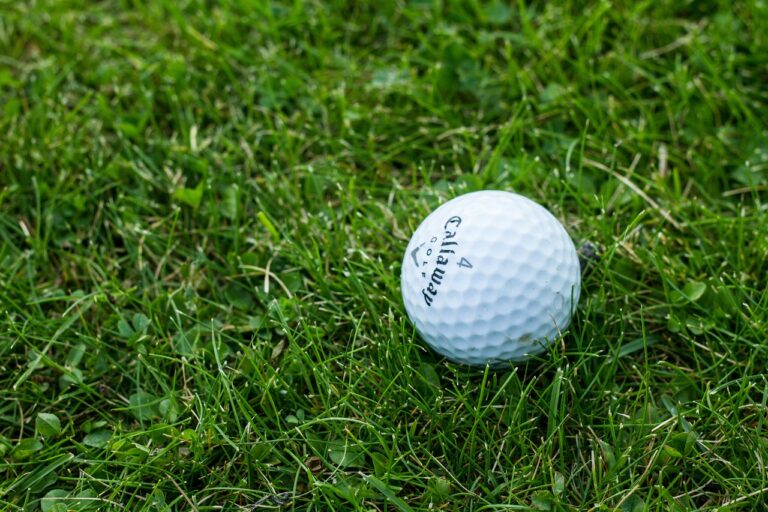A golf ball measures approximately 4.27 centimeters in diameter. This size equates to about 42.7 millimeters, making it a standardized object in the world of sports.
Golf enthusiasts and players alike often overlook the significance of a golf ball’s dimensions, yet these measurements play a crucial role in the game’s mechanics and regulations. The consistent size ensures fairness and uniformity across all levels of play, from amateur rounds to professional tournaments.
Understanding the dimensions of a golf ball can also provide insights into its aerodynamic properties and how it will perform on the course. Whether you’re selecting the right golf ball for your game or simply curious about its specifications, knowing its size is essential.
Contents
Golf Ball Size In Centimeters
Curious about the size of a golf ball? Understanding the dimensions can help appreciate the design and regulations that shape the game. Let’s explore the size of a golf ball in centimeters.
The Standard Diameter
The official diameter of a golf ball is 4.268 centimeters. This precise measurement ensures uniformity in the game. The size matters for aerodynamics and control.
Comparing Past And Present
In the past, golf balls varied more in size. Today, strict standards exist. The current size reflects years of evolution for optimal play. Comparing old and new balls shows how the game has standardized.
| Period | Size in Centimeters |
|---|---|
| Before 20th Century | Varied |
| Modern Era | 4.268 |
History Of Golf Ball Dimensions
The size of a golf ball has not always been standard. The evolution of golf ball dimensions reflects the history and technological advances in the game.
Early Golf Ball Sizes
The earliest golf balls were known as “featheries.” They were handcrafted from leather and stuffed with feathers. Featheries varied in size, as they were not produced with a uniform standard. Most featheries were smaller than today’s golf balls.
Evolution To Modern Standards
By the 19th century, the “guttie” ball emerged. Made from gutta-percha, these balls were more uniform in size. The invention of the rubber core ball, or “Haskell ball,” in 1898 further standardized the size. Eventually, the United States Golf Association (USGA) and the Royal and Ancient Golf Club of St. Andrews (R&A) established the minimum diameter. Today, a golf ball must have a diameter of no less than 4.27 centimeters.
- Featheries – Handmade, varied sizes
- Guttie – More uniform, early standardization
- Haskell – Rubber core introduced
- USGA & R&A – Set modern size regulations
These changes in golf ball dimensions have influenced the game. Players now enjoy a consistent standard that allows for a fair and standardized playing field across the globe.
Regulations On Golf Ball Size
The size of a golf ball is not just a random measurement; it’s bound by strict regulations. These standards are critical for maintaining the game’s integrity. Players and manufacturers alike must adhere to these rules to ensure fair play.
Governing Bodies And Rules
The two main organizations that set the rules for golf are the United States Golf Association (USGA) and the Royal and Ancient Golf Club of St Andrews (R&A). Together, they determine the specifications for golf equipment.
| Organization | Minimum Diameter | Maximum Weight |
|---|---|---|
| USGA | 1.68 inches (4.2672 cm) | 1.62 ounces (45.93 grams) |
| RA | 1.68 inches (4.2672 cm) | 1.62 ounces (45.93 grams) |
All golf balls must be at least 4.2672 centimeters in diameter. That’s a little smaller than a ping pong ball. They also cannot weigh more than 45.93 grams. These rules ensure that all golf balls are consistent in size and weight.
Impact On The Game
The size and weight of a golf ball can greatly affect how it moves. A smaller ball might fly farther, while a heavier one might not travel as easily. By setting a standard, the game remains fair for all players.
- Uniform size helps players know what to expect from each shot.
- Standard weight ensures consistent performance in different conditions.
- The rules protect the game’s challenge and skill level.
These regulations are key to the game’s competitive nature. They keep the playing field level for all golfers.
Measuring A Golf Ball
Understanding the size of a golf ball is crucial for both players and enthusiasts. The diameter of a golf ball is specifically defined by the rules of the game. Let’s explore how to measure this essential piece of sporting equipment accurately.
Tools For Measurement
To measure a golf ball, you need the right tools:
- Vernier Caliper: Offers high precision.
- Ruler: Easily accessible but less precise.
- Measuring Tape: Flexible and handy for a quick check.
Accuracy And Precision
For accurate golf ball measurement:
- Place the golf ball between the caliper’s jaws.
- Align the caliper correctly to avoid slanted measurements.
- Read the measurement and record it to the nearest millimeter.
Accuracy is key to ensuring fair play and equipment standard compliance in golf.
Significance Of Golf Ball Size
The size of a golf ball is crucial for the game. It affects how the ball flies and how players interact with it. The standard golf ball measures 4.27 centimeters in diameter. This precise size ensures fair play and consistency across the sport.
Performance Factors
Golf ball dimensions influence the ball’s aerodynamics. A ball that’s too large or too small won’t perform well. The 4.27 cm size strikes a balance, providing optimal flight and distance.
- Air resistance: A smaller ball might fly faster but won’t have the same distance.
- Spin: The size affects how much spin a player can put on the ball.
- Control: A well-sized ball gives players better control on the greens.
Player Preferences
Players often have preferences for certain types of balls. The standard size caters to a wide range of players. It ensures consistency in practice and competition.
| Preference | Reason |
|---|---|
| Feel | A standard ball provides a familiar feel for players. |
| Performance | Players know what to expect in terms of ball behavior. |
| Usability | The ball works well with various golf clubs. |
Golf Ball Size Variations
Understanding the size of a golf ball is key for any golfer. Golf balls may seem similar, but size variations do exist. These differences can affect a player’s game. Let’s explore the range of sizes and how to choose the right one.
Range Of Sizes Available
Standard golf balls have a specific size, but small differences can occur. Golf balls generally measure around 4.267 cm (42.67 mm) in diameter. This size is set by the RA and United States Golf Association (USGA). Yet, some balls may be slightly larger or smaller within the rules.
| Size (Diameter) | Common Usage |
|---|---|
| 4.267 cm | Standard Play |
| 4.1 to 4.3 cm | Practice or Novelty |
Choosing The Right Size
Selecting the right golf ball size is less about personal choice and more about regulations. For official tournaments, the standard size is required. Players should use the 4.267 cm balls for consistent performance. For casual play, experimenting with different sizes can be fun.
- Use 4.267 cm balls for official games.
- Practice with any size to improve skills.
- Check with local course rules for acceptable sizes.
Manufacturing Process
The manufacturing process of golf balls is fascinating, involving precise engineering and careful material selection. This process ensures that each ball meets the strict standards required for performance and consistency in golf.
Materials Used
Golf balls are made from various materials depending on the type of ball. Here are the most common materials:
- Rubber – The core is typically made of synthetic rubber for elasticity.
- Resin – Used in the outer layers for durability and control.
- Urethane – Often used for the cover, providing a soft feel and spin control.
- Surlyn – A less expensive alternative to urethane, used in distance balls for its durability.
Quality Control
Each golf ball must pass multiple quality control tests. These include:
- Size and Weight – Each ball is checked to ensure it matches the standard golf ball dimensions.
- Balance – Balls are spun to check for even weight distribution and symmetry.
- Compression – Tests are performed to measure the deformity of a ball when under pressure.
- Visual Inspection – Each ball is also visually inspected for defects in shape or texture.
Golf Ball Size Comparison
A standard golf ball measures around 4.267 cm in diameter. This precise measurement can seem abstract without context. Let’s compare the size of a golf ball to other sports balls and common objects.
To Other Sports Balls
| Sport | Ball Diameter |
|---|---|
| Tennis | 6.7 cm |
| Baseball | 7.5 cm |
| Basketball | 24 cm |
| Soccer | 22 cm |
Golf balls are smaller than most other sports balls. They are less than half the size of a soccer or basketball.
To Common Objects
- A ping pong ball is slightly larger at 4 cm.
- A US quarter has a diameter of 2.4 cm.
- An AA battery is longer, measuring about 5 cm.
When placed side by side, a golf ball is roughly the size of a large grape. It’s also a bit smaller than a standard light bulb base.
Frequently Asked Questions
Is A Golf Ball 4 Cm?
A golf ball’s diameter is approximately 4. 27 cm.
Is A Golf Ball 5 Cm?
No, a golf ball is not 5 cm. Its diameter is about 4. 27 cm.
Is A Golf Ball Size Tumor Big?
A golf ball size tumor, typically about 4. 27 cm in diameter, is considered significant and warrants medical evaluation.
What Is Golf Ball Diameter?
The diameter of a golf ball is 4. 268 centimeters (cm).
Conclusion
Understanding the size of a golf ball is crucial for both beginners and seasoned players. A standard golf ball measures about 4. 27 centimeters in diameter. This precise sizing helps maintain fairness in the game and ensures compatibility with golfing equipment.
Next time you hit the green, you’ll know exactly the scale of the ball you’re playing with. Remember, every centimeter counts when aiming for that perfect swing!





